River Errobi in search of a good management plan
Euskal Herria is disastrous, and many others, although it seems to be better, careful, because its appearance often deceives. Fortunately, it seems that the level of awareness and willingness to change the situation through management plans is increasing. The agreement of the Errobi River regatta advances at least, and although it is an ancestral project, it has been reinforced with the signing of the agreement by the financial collaborators of yesterday.
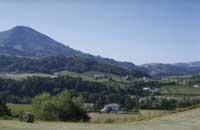
The river Errobi is not going to be a well-known river for many, but, well, surely no one is surprised that in the surroundings of Bidarrai and Baigorri there is a unique environment for practicing water sports such as kayaks and rafting. The inhabitants of the high channel of Errobi know it above all for being an ideal place for fishing, while those of the low channel of Errobi appreciate it for the capture of drinking water. Each sees his face to the river according to his interests, but he should never forget the influence that each use can have on the quality of the river and, therefore, on other activities.
Of course, it is essential that in all rivers there be this type of action (rivers are not integral reserves), but rarely there is a plan that aims to unify all these activities and uses and recover the quality of the river. Errobin is a management plan for a long time, but after a time of drag, with renewed forces, since the financial partners have signed their commitment.
Characteristics of Errobi
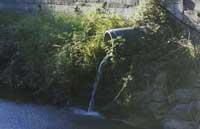
Errobi was born in the Pyrenees of Lower Navarre and poured its waters into Baiona al Aturri. 75 km travel and 1000 km 2 basin. Its 43 towns have 70,000 inhabitants. 27% of the land on the margins is occupied by forests, 42% by meadows and 22% by urbanizations. Consequently, it is clear that the main activity is cultivation, although there is also some industry. However, cultivation is not intensive and no adverse effects have been shown. The population, however, throws dirty water into the river and microbiological studies have shown that these spills are a serious problem.
However, as has already been indicated, in addition to household waste and crops, other activities also affect the quality of the river, and just take a walk along the banks of the rivers to realize it. The 17 fish farms, 20 micro-plants, hunters, fishermen (a total of 6,200) and those who practice water sports (about 25,000 people a year), which are from the origin of the river, are a sample of the importance of this river. Going down to the area of Cambo, the water of Errobi is used for thermalism, while at the height of Ustaritz are the trucks dedicated to the extraction of the stone of Errobi, as well as the facilities of the company that supplies water to the neighbors of Baiona, Anglet and Biarritz to 20,000,000 m 3.
Nice look, but serious problems
Without getting too close, it is difficult to think that Errobi has so many performances, but in the quality recovery plan it is necessary to take them into account.
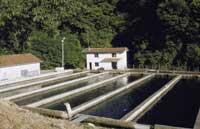
According to Miren Iturriotz, revitalizing the management plan, "in the physical-chemical study it was detected that Errobi is a river of very good quality, but the bacteriological quality in the lower part of the river is bad or very bad". The data provided by the bacteriological study should be taken into account, on the one hand, for the problems posed by drinking water and, on the other, for the emergence of a serious problem in the river basin. The law requires that in 100 ml of water there be less than 20,000 fecal coliforms in the water collected to be potable. In Errobi there are at some points levels of concentration of 18,000 fecal coliforms and if the level is exceeded would prohibit the pumping of drinking water of Errobi. In the words of Miren Iturrioz, "that would be catastrophic, since in winter 200,000 inhabitants would be left without water and in summer 400,000. The first objective of the management plan is to guarantee bacteriological quality."
The black spot that causes this problem are the dirty waters of the house. In addition to the water spilled by three treatment plants (that of Donibane Garazi, that of Alduque and that of Baigorri), Errobi receives without any treatment the dirty waters of numerous scattered houses. However, according to French law, each municipality must have a plan for the year 2005 to clean up all homes.
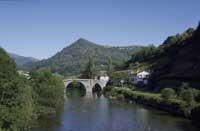
The ban on Errobin bath is also a consequence of poor bacteriological quality. Nowadays there is a lot of sport in Errobi (kayak, rafting...) and it is not surprising that during the summer people look bathed, but in fact it is prohibited. It is obvious that by improving this quality, Errobi's image would change radically.
Higher quality is also considered necessary for the biological life of the river. This is to ensure hydrographic monitoring and margins conservation. Scales must overcome all barriers for migrating fish and microplants must respect the minimum flow of the river.
However, although all agents have shown their willingness to collaborate as far as possible, the main problem is that people have diverse interests.
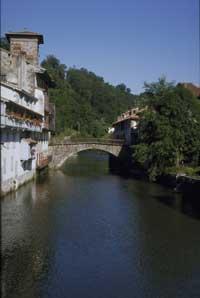
On the one hand, there are conflicts between different activities and on the other, between peoples. In fact, it is difficult for the fisherman and the water sports practitioner to fix themselves together. Likewise, the existing problems at the top and bottom of Errobi are not the same. In the low course, good quality water is sought for drinking water, while in the upper course, small villages find it difficult for only them to finance all the facilities of the treatment plant. According to Miren Iturriotz, "we want to remember that the river must be considered in its entirety and sign a solidarity agreement. Thus, the inhabitants of Bayonne, Biarritz and Anglet would pay 10 more cents and help the villages that are upstream."
The idea of river agreement, insofar as it covers the entire river and covers all uses, seems an interesting element of management. Now it remains to reach the citizen and get interesting results.
What is a river agreement?
The race agreement is an agreement between public and private agents that can generate changes in a river. The objective is to unify all activities carried out in the river or basin itself, recovering the quality of the river and protecting all the water sources of the area, taking into account all the characteristics of the river.
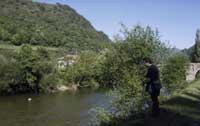
The signatories of the Convention undertake, according to their respective responsibilities, to achieve the objectives set in the medium term. The work of elected officials in the municipalities of the basin is mainly focused on setting objectives and promoting, but it is necessary to raise awareness among the entire population. Thus, although the agreement is a plan of a few years, increasing awareness contributes to such a sustainable development.
The structure of the river agreement is very simple. On the one hand, there is an operative group that brings together elected officials, and on the other, a commission that brings together potentially affected people (fish farms, fishermen, peasants, water athletes, managers of microplants, ecologists, industrialists...) and all interested people. The decisions adopted by these two groups are communicated to all the inhabitants of the basin. To a certain extent the group agent carries out coordination and awareness work.
Today we talk about the agreement of the Errobi River, but it is not the only one in Iparralde. The Urdazuri Rivers of Lapurdi and Uhaitzandi of Zuberoa also have a plan adapted to their needs.
Published in the supplement Natura de Gara.
Buletina
Bidali zure helbide elektronikoa eta jaso asteroko buletina zure sarrera-ontzian











